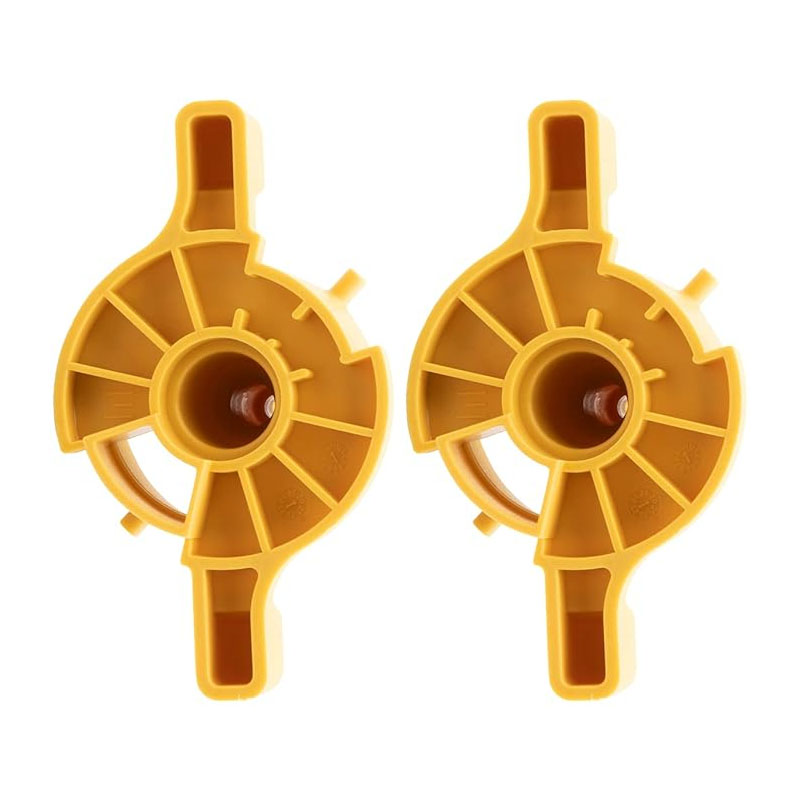Discover High-Quality 35x52x7 Oil Seal for Optimal Performance and Durability
Understanding the Importance of the 35x52x7 Oil Seal
In various machinery and automotive applications, oil seals play a vital role in maintaining the integrity and functionality of systems that rely on lubricant retention and grease containment. Among these, the 35x52x7 oil seal stands out due to its specific dimensions and versatile applications. This article will delve into the characteristics, applications, and significance of the 35x52x7 oil seal.
What is an Oil Seal?
An oil seal, also known as a lip seal, is a mechanical component used to seal the interface between a rotating shaft and a stationary housing or bore. Its primary purpose is to prevent the leakage of lubricants while simultaneously keeping contaminants out of the lubrication system. This is crucial for ensuring that machines and engines operate efficiently and have a prolonged lifespan.
Dimensions and Material
The 35x52x7 oil seal is characterized by its dimensions, which are given in millimeters a 35 mm inner diameter, a 52 mm outer diameter, and a 7 mm width. These measurements make it suitable for a variety of applications, especially in machinery where space is at a premium.
Oil seals can be constructed from various materials, including rubber, silicone, and thermoplastic elastomers. The specific material used is often chosen based on the operating conditions, including temperature, pressure, and the type of fluids involved. For the 35x52x7 oil seal, commonly used materials include Nitrile (Buna-N) and Viton, which provide resilience against oil and other lubricants, as well as mechanical stress.
Applications of the 35x52x7 Oil Seal
The 35x52x7 oil seal is extensively used in numerous applications including
1. Automotive Industry This size is frequently employed in engine components, such as crankshafts and camshafts, where it plays a critical role in preventing oil leaks and ensuring optimal performance.
35x52x7 oil seal

2. Industrial Machinery Many types of machinery use these seals to protect bearings and gears from lubricant loss and contamination.
3. Agricultural Equipment Tractors and other farm machinery use oil seals to create a barrier against dirt and moisture, ensuring that internal lubrication remains intact.
4. Pumps and Compressors Pumps often utilize oil seals to maintain fluid integrity, preventing leaks that can lead to inefficiency and equipment failure.
Importance of a Quality Oil Seal
The efficacy of an oil seal, including the 35x52x7 type, is paramount for the proper functioning of machinery and engines. A high-quality oil seal can prevent fluid loss, thereby reducing the need for frequent oil changes and preventing environmental hazards associated with lubricant spills. Furthermore, effective sealing protects internal components from dirt, dust, and other contaminants that could potentially cause wear and tear, ultimately extending the service life of the equipment.
Installation and Maintenance
Proper installation of the 35x52x7 oil seal is crucial. Incorrect installation can lead to premature failure, which negates its purpose. It is advisable to ensure that the sealing surface is clean and free from debris before installation, and that the seal is aligned properly. Regular inspections can also help in identifying any signs of wear or leakage, allowing for timely replacements.
Conclusion
In conclusion, the 35x52x7 oil seal is an indispensable component in various mechanical systems, particularly in automotive and industrial applications. Its ability to maintain the integrity of lubrication systems while protecting against external contaminants is vital for efficient operation and longevity of machines. Selecting the right oil seal made from appropriate materials, alongside proper installation and maintenance, ensures optimal performance and minimizes downtime in equipment operation. Understanding and appreciating the role of the 35x52x7 oil seal is essential for anyone involved in machinery design, maintenance, or repair.
-
Simplifying Oil Changes: A Comprehensive Guide to Oil Drain Plugs and Their Variants
News Aug.04,2025
-
Mastering Oil Drain Maintenance: Solutions for Stripped, Worn, and Upgraded Oil Plugs
News Aug.04,2025
-
Fixing Oil Pan Plug Issues: Leaks, Stripped Nuts, and the Right Replacement Solutions
News Aug.04,2025
-
Everything You Need to Know About Oil Drain Plugs: Sizes, Fixes, and Upgrades
News Aug.04,2025
-
Choosing the Right Oil Drain Plug: A Guide to Sizes, Materials, and Drain Innovations
News Aug.04,2025
-
A Complete Guide to Automotive Drain Plugs: Types, Problems, and Innovative Solutions
News Aug.04,2025
-
The Ultimate Guide to Car Repair Kits: Tools and Essentials Every Driver Should Own
News Aug.01,2025
Products categories















